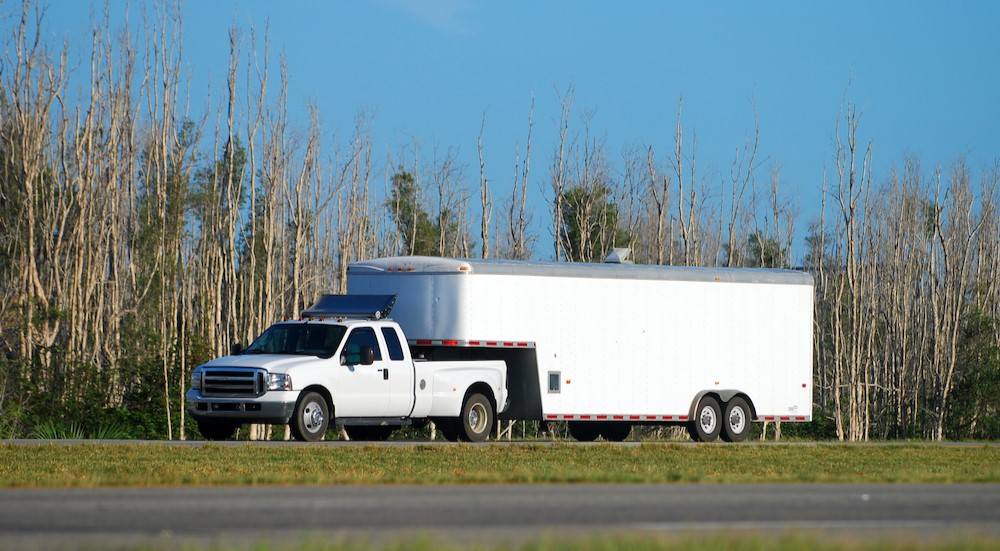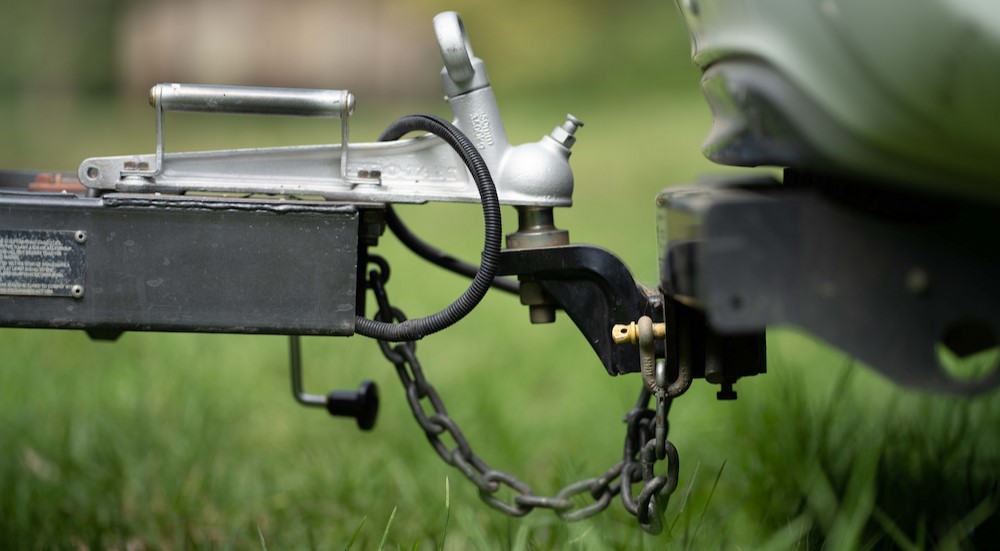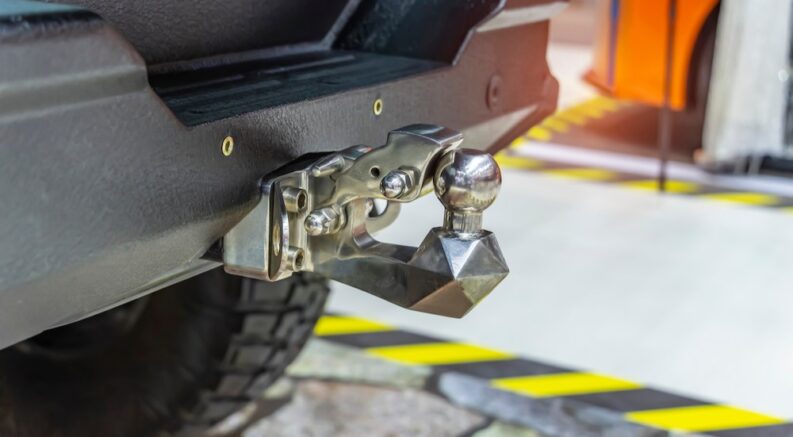Most drivers never feel the need to add a trailer to their vehicle, but towing is a great way to get more functionality out of a smaller vehicle or move truly tremendous loads if you have a larger model. However, if you’re planning to hitch up a trailer for the first time, you’ll need quite a few things, foremost among them, a trailer hitch.
The good news is that many vehicles these days come from the factory already prepped to tow. Adding a tow hitch to most vehicles is pretty simple, even if they weren’t originally built to haul a trailer. The bad news is that there is an almost bewildering variety of tow hitches to choose from, and you need to make sure that you have the appropriate hitch for your trailer.
Types of Tow Hitches
The first decision you need to make is what type of tow hitch to choose. Fortunately, this is usually a fairly simple decision that will largely be determined by the type of vehicle you have and the type of trailer you wish to tow.
There are three main types of trailer hitches:
Conventional Hitches
The conventional receiver hitch is by far the most common type and can be added to virtually any vehicle, from compact sedans to full-size trucks. This type of hitch consists of a rectangular tube (the receiver) positioned underneath the rear bumper and directly attached to the vehicle’s frame. A variety of different types of ball mounts can be fitted to the receiver, making this a simple and flexible way to tow.
Gooseneck Hitches
If you don’t have a pickup truck, then a gooseneck hitch isn’t for you. This type of hitch consists of a ball mount in the middle of the truck bed, allowing the tow vehicle to support the tongue weight of the trailer (the portion of the weight resting on the hitch) directly on its rear axle. Adding a gooseneck hitch to a truck is a fairly involved process, and you need a big trailer designed for gooseneck towing, but it’s a great option if you have a truly heavy load to move.
Fifth Wheel Hitches
Similar to a gooseneck hitch, a fifth wheel hitch is installed in the bed of a pickup truck. However, instead of being just a simple ball mount, a fifth wheel hitch is a fairly large and complex design that uses a set of metal jaws on a rotating headplate to attach the trailer. The advantage is a smoother and more controlled ride, making this a favorite for towing big RVs. However, fifth wheel hitches tend to be slightly lower capacity and require more maintenance than a gooseneck hitch.

Choosing the Right Hitch Capacity
While every vehicle has an official maximum towing capacity, that is independent of the hitch capacity. You might have an F-150 rated to tow up to 14,000 lbs, but if you put a hitch that’s only rated to tow 2,000 lbs, you’re not going to have a good day if you try to use the vehicle’s full towing capacity. If you want to play it safe, you can get a hitch rated for more than your vehicle, or you could get a lower-rated hitch if you have no desire to use your vehicle’s full capacity.
If you’re in the market for a gooseneck or fifth wheel hitch, manufacturers generally assume you know what you are doing and give you a wide range of options to choose from. Many fifth wheel hitches are rated for up to 30,000 lbs, and some gooseneck hitches can handle up to 40,000 lbs, but it’s up to you to make sure the hitch is rated for your needs.
However, if you’re in the market for a receiver hitch, things are a little easier because hitches have been grouped into four official (and one unofficial) categories based on their max capacity. These classes are defined by the SAE J684 standard:
Class 1
- 2,000 lb load limit.
- 1-¼ inch receiver.
A Class 1 hitch is a good fit for adding some extra versatility to sedans and compact SUVs like the Toyota RAV4 or Honda CR-V. It will let you haul a small trailer for cargo like dirt bikes, a jet ski, or even a small boat. It will also let you add a bicycle rack or cargo carrier that slides into the receiver, making it useful even if you never plan to pull a trailer.
Class 2
- 3,500 lb load limit.
- 1-¼ inch receiver.
A Class 2 hitch still won’t let you tackle serious towing, but it will let you take advantage of the more powerful engines in certain compact SUVs like the Ford Escape or Mazda CX-50. You will also find some midsize pickup trucks designed for a Class 2 hitch. The main reason to go with a Class 2 hitch is that most (but not all) states will let you tow up to 3,000 lbs without trailer brakes.
Class 3
- 5,000 lb load limit.
- 2-inch receiver.
A Class 3 hitch will let you use the full towing capacity of midsize SUVs like the Toyota Highlander or Ford Explorer and can be enough for some basic towing with a larger SUV or midsize pickup. If you’re looking to tow a medium-sized boat, small camper, or even a race car, then this hitch may be what you need. Note that many manufacturers sell Class 3 hitches rated for up to 8,000 lbs, although this technically exceeds the SAE standard.
Class 4
- 10,000 lb load limit.
- 2-inch receiver.
A Class 4 hitch will let you handle just about anything you would want to tow without upgrading to a gooseneck or fifth wheel hitch. This will handle the maximum towing capacity of any midsize truck or full-size SUV on the market, and there are only a few full-size trucks that can exceed it.
Class 5
- No official limit.
- 2-inch or 2-½ inch receiver.
SAE J684 only lays out standards for four classes of hitches, but sometimes you will see “Class 5” hitches advertised. Some full-size trucks are rated to tow over 10,000 lbs with a conventional hitch, and Class 5 hitches are designed to fill the gap above Class 4 hitches. However, because these hitches do not fall under an SAE classification, their actual tow rating can vary considerably, and they do not have to meet any testing requirements.

A Hitch Isn’t All You Need
While this should help you find the right hitch for your vehicle and trailer, a hitch isn’t all you need to start towing. A proper hitch setup includes more than just the receiver, as you will also need trailer wiring, safety chains, and other accessories designed to make towing safe and comfortable.
- Trailer Wiring: If you are taking your trailer on public roads, it will need to be plugged into your vehicle for brake lights and turn signals. Trailers over a certain weight (typically 3,000 lbs) will also need trailer brakes. Vehicles designed to tow usually come from the factory with standardized trailer wiring connectors. You will have to install this if yours does not.
- Safety Chains: While a hitch shouldn’t come off while you’re driving, it can happen if it is damaged or not properly secured. Trailers should always be connected to your vehicle with secondary safety chains. Make sure there is a secure place to attach these as part of the hitch install.
- Trailer Brake Controller: This handy device lets you adjust how much braking power the trailer brakes apply, which is critical for safely towing larger loads. Many full-size trucks and SUVs come with this feature from the factory.
Get More From Your Vehicle
While not every driver will feel the need to tow with their vehicle, having the ability to hitch up a trailer is a great way to get more out of your car, truck, or SUV. Whether you want to haul a motorcycle with your sedan, bring a camper with you on your vacations, or move heavy equipment between job sites, a trailer hitch can open up tons of possibilities. As long as you get the right hitch for the job at hand, you’ll be ready to do more than ever before.

